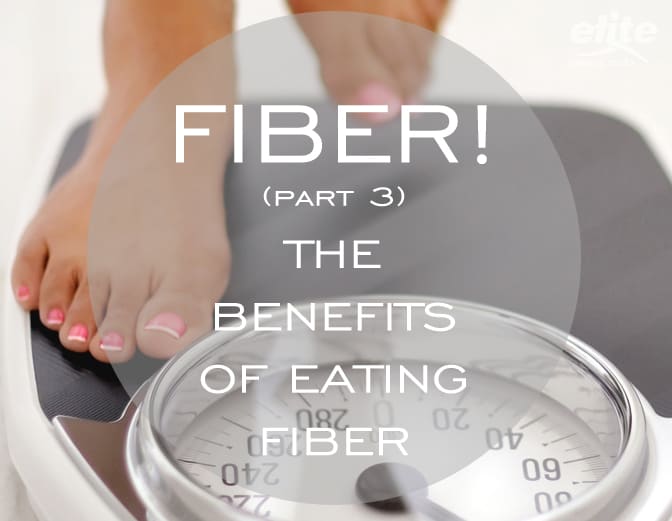
This is Part 3 in a 4-part series on FIBER! (Read Part 1 & Part 2.)
Fiber is a substance found in the skins of fruits and vegetables and in whole grains, which is hard to digest and important for digestion. It is recommended that adults incorporate between 30 and 40 grams of fiber per day, but most adults only get 10 grams per day through their normal diet. There are a variety of health benefits to increasing the amount fiber in your diet.
Constipation
Fiber absorbs water in the bowel and helps push waste from the system because it remains intact or bulky in the intestinal track. Fiber keeps the bowel moving and keeps stools soft and easy to pass. Increasing fiber in the diet can typically relieve constipation in three days or less. It also makes hemorrhoids more comfortable because there is less strain to pass waste.
Chronic Disease
Increasing daily fiber intake can help prevent or improve recovery time for several chronic or serious diseases. Diseases positively impacted by an increased amount of fiber in a diet include heart disease, cancer, diabetes, bi-ventricular disease, gallstones and kidney stones.
Weight Control
Foods that contain fiber are bulky and thus decrease appetite and feelings of hunger. Fiber for weight control is best taken in its natural form, like in fruits and whole grains – not in fiber additive which is stirred into food.
Lists of high-fiber foods are easy to find and give a clear picture of what foods are easiest to add to a diet in order to increase fiber intake. Most adults need to double or triple their daily fiber intake in order to get enough to see significant health benefits.
Coming up next week: “The Benefits of Eating Fiber” (Stay tuned!)
Looking for more information on fiber, other nutrients, or just food in general? Follow the Nutrition category on our blog! Or talk to our Registered Dietitan!
By Rita Larsen, RD; Elite Sports Clubs Dietitian and Nutrition Counselor